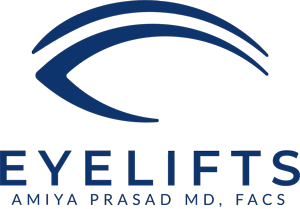What is Platelet-Rich Plasma?
Platelet-Rich Plasma (PRP) is a concentrated mixture of blood plasma—the component of our blood that contains healing growth factors such as PDGF (platelet-derived growth factor), VEGF (vascular endothelial growth factor), and TGF (transforming growth factor). It is the part of our blood that initiates the coagulation process and helps in speeding up the healing rate of wounds.

Growth and healing factors contained in platelet-rich plasma (PRP).
How is Platelet-Rich Plasma Obtained?
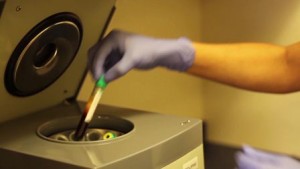
Your own blood is the raw material for platelet-rich plasma (PRP) by spinning a small amount in a centrifuge.
Similar to how blood is taken during a routine blood test, blood is drawn from the patient and placed into a centrifuge. The blood is spun to isolate a clear, yellow serum which is heavier than the darker components of the blood. The isolated serum is platelet-rich plasma, also known as PRP. PRP can be used on its own, or in combination with other materials.
Difference of Platelet-Rich Plasma (PRP) and Platelet-Rich Fibrin Matrix (PRFM)
In his practice, Dr. Prasad also used uses platelet-rich fibrin matrix (PRFM), which is basically a thicker form of PRP. Preparation involves the use of Selphyl® technology, which is an FDA-cleared process of platelet-rich plasma mixed with calcium chloride to be transformed into platelet-rich fibrin matrix (PRFM).
This Selphyl® PRFM consists of a natural blood protein called fibrin, and platelets, which is the part of your blood that stops bleeding. This particular platelet system is effective because it releases the growth factors in concentrated doses over time, and steadily stimulates tissue cells in the treatment areas to produce collagen and develop blood vessels, thus rejuvenating the skin in the process.
Benefits of Platelet-Rich Plasma
Oculoplastic surgeon Dr. Amiya Prasad has been incorporating the use of PRP in his practice as means of further enhancing and improving the results of his cosmetic surgery procedures. Since PRP is derived from the patient’s own blood, there is no risk of allergic reactions, thus making it a very safe method regenerative medicine that be used to treat various signs of aging.
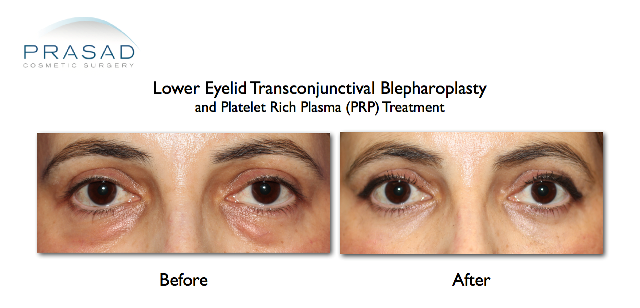
Platelet-rich plasma (PRP) can be used to improve healing after eyelid surgery, as well as improve skin quality to make it thicker and give it a healthy lustre.
With the help of PRP, Dr. Prasad is able to rejuvenate and improve wrinkles, folds, scars on the neck and facial areas, oftentimes without even needing to perform surgery or use lasers. He is also able to boost the results of facelifts, rhinoplasties, facial implant surgeries, hair restoration treatment, and eyelifts.
PRP for Tear Troughs
The tear troughs are located at the inner corners of the eyes, next to the nose. As we age, people will often encounter problems with this particular facial feature in the form of hollowing, often due to the depletion of the fat in the area. This can also occur in much younger patients due to loss of cheek volume after having lost a lot of weight. It can be quite bothersome as the hollowness can give a person a sunken and almost gaunt look, which only adds years to one’s appearance.
Addressing the tear trough areas, however, requires a lot of finesse. Many factors such as skin thickness, skin color, the underlying bone structure, and the existence or lack of fat pockets all play influential roles in determining the proper course of action.
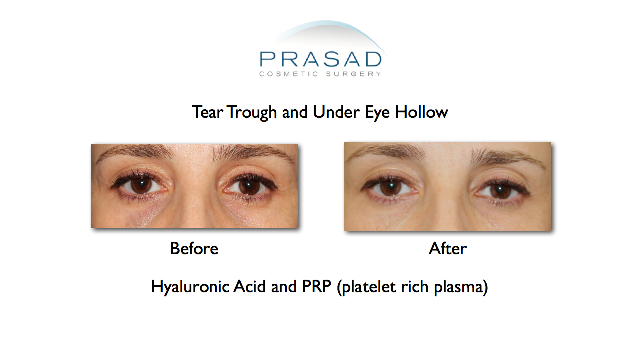
Addressing hollowness under the eyes with a combination of platelet-rich plasma (PRP) and a hyaluronic acid filler like Restylane.
When addressing the tear trough area, especially when there are no fat pockets present in the area, Dr. Prasad suggests that combination approach of volume correction and skin quality enhancement is best. This combination approach usually consists of a submalar implant or hyaluronic acid-based dermal filler, in order to correct the lack of volume in the area, and platelet-rich plasma, to improve the quality and pigmentation of skin.
One of the more challenging aspects of this procedure is correcting the darker pigmentation of the tear trough area which can make one look tired. Fortunately, Dr. Prasad has seen much success in addressing this issue with the help of platelet-rich plasma. Over the course of a few sessions spanning several months, Dr. Prasad has seen improvement in the skin quality of his patients due to the increased collagen production and blood supply that PRP delivers. Coupled with the addition of volume to the cheek areas to help with hollowing, Dr. Prasad has been able to give his patients healthier and thicker skin, which results in a more youthful look.
Platelet-Rich Plasma for Eye Bags
If there’s an unwanted physical feature that can definitely make anyone look tired, regardless of their age, it would be eyebags. Eyebags are caused when the fat pockets that surround the eye (orbital fat) pushes forward and creates a bulge. This happens often, especially as we age, and is referred to as lower eyelid fat prolapse. People who exhibit only a very slight bulging can get away with camouflaging it using hyaluronic acid dermal fillers like Restylane or Juvederm. However, severe cases wherein the bulging is very obvious cannot be addressed with eye creams and fillers alone. In fact, people who try to camouflage severe eyebags only end up making them look even puffier.
For patients with significant eyebags, Dr. Prasad performs a procedure called a transconjunctival lower eyelid blepharoplasty, which he pairs with CO2 laser and the use of platelet-rich plasma. Since eyelid skin is only about 0.5mm thick, improving its quality can be quite tricky—which is also why Dr. Prasad chooses to employ a combination approach using the methods previously stated.
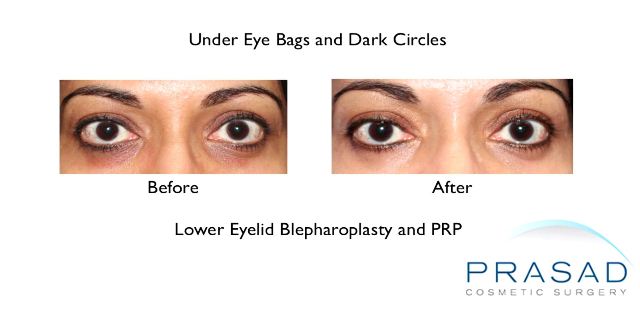
Removing eye bags with the transconjunctival approach, coupled with platelet-rich plasma (PRP) for dark circles under the eyes gives a refreshed look of never having the bags or pigmenation issues
The ability of platelet-rich plasma to stimulate collagen production, improve skin tone, texture and quality, address signs of sun damage, and generally repair skin has produced wonderful results in Dr. Prasad’s patients. In addition to that, using platelet-rich plasma as a post-surgery treatment also speeds up the healing rate of skin. With this stem cell-based treatment, people are able to regain youthful-looking eyes that may not be accomplished through surgery alone.
Because of the delicate and complex structure of the eye, it is absolutely important that you meet with a surgeon who has had significant expertise and experience in the eye area. It takes a keen eye, an artistic sense, a steady hand, and extensive knowledge to perform all the techniques needed to achieve the best possible outcome for your eyes.
In order to help you determine which course of action is best for you, Dr. Amiya Prasad is ready and available to listen to your concerns. Simply set a consultation appointment with us today at our Manhattan office at (212) 265-8877 or our Garden City, Long Island office at (516) 742-4636. Our lines are open 24 hours a day, 7 days a week.
